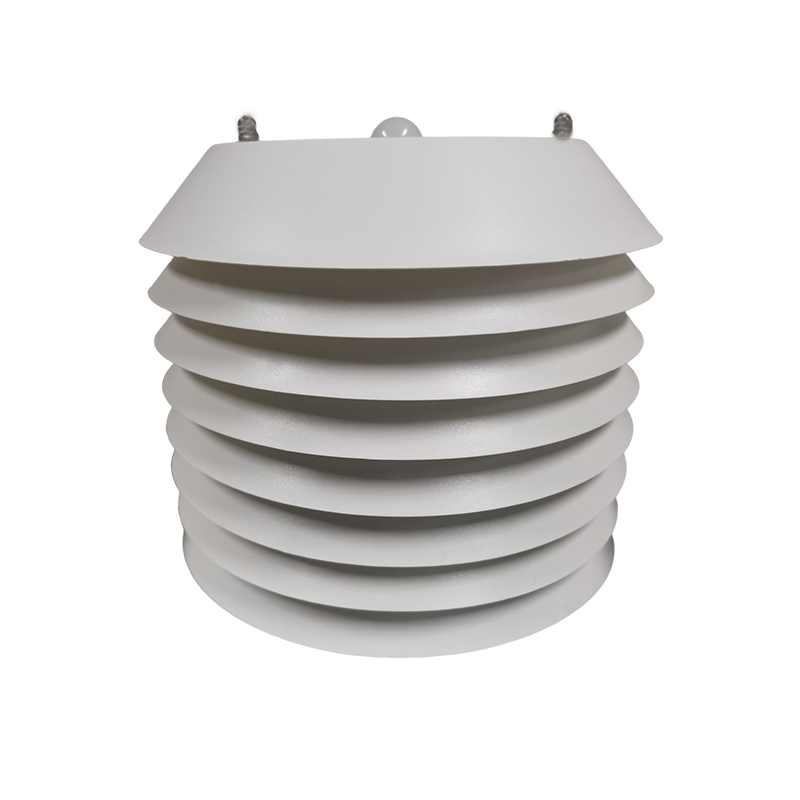

— Products —
 Consumer hotline +8618073152920
Consumer hotline +8618073152920 WhatsApp:+8615367865107
Address:Room 102, District D, Houhu Industrial Park, Yuelu District, Changsha City, Hunan Province, China
Weather Stations
What is a rain and snow sensor? Rain and snow sensor is a kind of instrument that utilizes the conductive property of rainwater and uses advanced detection circuit to detect whether there is rain or snow. What is the working principle of the rain and snow sensor?Rain Monitoring :The top of the rain and snow sensor uses grill electrodes to utilize the conductivity of water. When rain falls on the sensing area, the electrodes will be short-circuited so that the device can detec···
Tel/WhatsApp:+8615367865107
Email:Arvin@niubol.com +Nearly 100 partner company in more than 68 countries. We are committed to providing high-quality, practical products to meet your needs and help you solve problems.Product Details
Rain and snow sensor product introduction
NBL-W-RSS rain and snow sensor adopts surface grating electrode to sense the external rain and snow condition, and adopts imported intelligent microprocessor inside, which has sensitive response and high measurement precision. Built-in automatic heating device can exclude the rain and snow attached interference, to protect the normal operation of the system. Output a set of relay normally open/closed switch signal, convenient for installation and use. This product can be widely used in meteorology, ocean, environment, airport, port, laboratory, industry and agriculture and transportation and other fields of rain and snow qualitative measurement.
| Measuring range: | rain, snow have or not |
| Power supply | DC 12V-24V |
| Output | switch : □ normally open □ normally closed |
| Instrument cable length: | 5 meters |
| Load capacity (contact capacity): | 5A, 250VAC/30VDC |
| Working environment: | Temperature -40℃~80 Humidity ≤100%RH |
| Rated voltage: | 300V |
| Product weight: | 120g |
| Product power consumption: | 1.5W |
Rain and snow sensor is a kind of instrument that utilizes the conductive property of rainwater and uses advanced detection circuit to detect whether there is rain or snow.

Rain Monitoring :The top of the rain and snow sensor uses grill electrodes to utilize the conductivity of water. When rain falls on the sensing area, the electrodes will be short-circuited so that the device can detect rain.
Snow Monitoring :The rain and snow sensor is able to measure snowfall because the sensor has an automatic heating function that prevents freezing and condensation in snowfall, long term temperatures below 0°C, and high humidity environments. The heating temperature can be set.

When installing the rain and snow sensor, keep the sensing surface of the sensor and the horizontal plane at an angle of 15 degrees to prevent the accumulation of rain and snow from affecting the sensor's measurement.
Rain and snow sensors are devices that detect the presence of precipitation (rain or snow) and are widely used in different fields and scenarios. These sensors determine precipitation by monitoring, for example, the contact of water droplets or snowflakes. The following are some of the major application scenarios for rain and snow sensors:
1. Meteorological monitoring: rain and snow sensors play an important role in the construction of weather stations for collecting precipitation data to help meteorologists analyze weather patterns and predict future weather changes.
2. Road traffic safety: Installing rain and snow sensors at transportation hubs such as roads, bridges and tunnels allows real-time monitoring of precipitation and timely activation of an alert system when inclement weather occurs, alerting drivers to the risk of road slippage and reducing traffic accidents.
3. Renewable energy sector: For example, the efficiency of solar power panels can be affected by snow cover, rain and snow sensors can be used to monitor and activate snow clearing mechanisms to maintain power generation efficiency.
4. Agricultural irrigation: In agricultural production, rain and snow sensors can be used to monitor natural precipitation, assist in deciding the start and stop of irrigation systems, optimize the use of water resources, and improve the yield and quality of crops.
5. aviation and maritime transportation: rain and snow sensors installed on airport runways, ports and ships can be used to monitor adverse weather conditions and ensure the safety of aviation and maritime transportation.
6. Outdoor advertising and information displays: Certain outdoor electronic displays and billboards are equipped with rain and snow sensors so that they can automatically adjust their brightness or display relevant safety reminders during inclement weather.
7. Public facility protection: For example, installing rain and snow sensors in public places such as parks and amphitheaters can automatically activate the covering facilities when precipitation comes to protect the equipment and public safety.
The above is only a part of the scene of the application of rain and snow sensors, with the development of technology and innovation, the application of rain and snow sensors will be more extensive.
Sensors & Weather Stations Catalog
Agriculture Sensors and Weather Stations Catalog-NiuBoL.pdf
Weather Stations Catalog-NiuBoL.pdf
Related recommendations
 Wind Speed sensor Output Modbus/RS485/Analog/0-5V/4-20mA
Wind Speed sensor Output Modbus/RS485/Analog/0-5V/4-20mA Tipping bucket rain gauge for weather monitoring auto rainfall sensor RS485/Outdoor/stainless steel
Tipping bucket rain gauge for weather monitoring auto rainfall sensor RS485/Outdoor/stainless steel 5-in-1 Temperature, Humidity, Air Pressure, Illumination, CO2 Sensor
5-in-1 Temperature, Humidity, Air Pressure, Illumination, CO2 Sensor 5 in1 Ultrasonic weather stations Atmospheric Pressure Temperature Humidity Wind Speed Direction sensor
5 in1 Ultrasonic weather stations Atmospheric Pressure Temperature Humidity Wind Speed Direction sensor 6 in1 Ultrasonic Weather Station Sensor for industrial & agricultural & environmental monitoring
6 in1 Ultrasonic Weather Station Sensor for industrial & agricultural & environmental monitoring 7 in 1 Ultrasonic Weather Station Sensor for Wind speed,Wind direction,Temperature, humidity, pressure,Illumin···
7 in 1 Ultrasonic Weather Station Sensor for Wind speed,Wind direction,Temperature, humidity, pressure,Illumin···
Screenshot, WhatsApp to identify the QR code
WhatsApp number:+8615367865107
(Click on WhatsApp to copy and add friends)